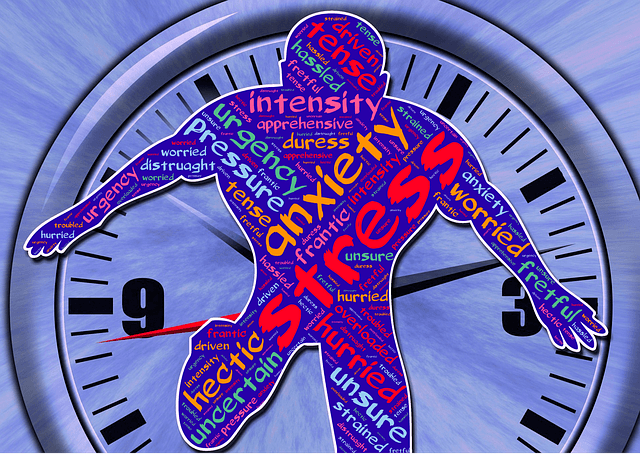
by Maureen Cooper | Dec 10, 2018 | Compassion, Kindness, Relationships
Using the news to connect with compassion
Recently, I got the chance to hear Karen Armstrongspeak at a symposium on diversity at the Vu University in Amsterdam. I do some work for the Charter for Compassion, which she founded, and I was interested to hear what she had to say.
She spoke about how polarised our world has become and stressed that each of us needed to find a way to do something to change that. She was asked how someone could contribute to this change on a personal level. Armstrong pointed out that when we watch the news, we come across things that upset and worry us. Her suggestion was that we look into that feeling of discomfort and use it to generate compassion. I do that myself sometimes, and it certainly does work.
However, more and more people that I speak with tell me that they have stopped watching the news because it distresses them too much. It got me thinking about a less confrontational way of connecting with compassion, rather than conflict.
What gets in the way of connection?
One of the greatest obstacles to connection is to just see another person as an object—not really human at all. We can do this just ouhttps://www.awarenessinaction.org/why-it-is-important-to-know-how-interconnected-people-are/t of habit, or just not paying attention. The check-out person in our local supermarket, a serving person in a restaurant, or the person driving the tram can all be people we just see as agents to provide what we need at that moment.
It can go much further though. During World War II, U.S. Army Brigadier General S.L.A. Marshall asked infantry soldiers how often they fired their guns in combat. The results were surprising and uplifting—only 15-20% of soldiers actually fired at the enemy.The reluctance to kill is hard-wired into our psyche. Unfortunately, this research led to the U.S. Army working on ways to dehumanise the enemy, so that soldiers felt less connection to the other side as human beings. It worked—by the Vietnam War, 95% of soldiers were firing their weapons but this came at a great cost. Between 18 and 54% of the 2.8 million military personnel who served in Vietnam suffer from post-traumatic stress disorder—far higher than in previous wars.
Creating a habit of connection
I mentioned already that not paying attention can mean that we don’t notice people as people. This is a habit that we can change if we take it on. One of the ways I am experimenting with since Karen Armstrong’s talk is to use my morning routine as a means to reach out to people beyond my immediate circle. As I shower, dress and eat breakfast I try to think of all the people involved in making the things I use available to me. In addition, I try to think of using natural resources well, whether workers are treated fairly, and the carbon footprint of what I am using.
Getting ready for the day
Showering
The toiletries we use—shower gel, shampoo, body lotion and make up—are sourced from all over the world.Micais used extensively, especially in make-up, and comes largely from India. However, child labour is often used in the mining of mica, with children not attending to school and working in unsafe conditions for tiny sums of money. There is work going on to try to put this right, but it goes slowly. I try as best as I can to use toiletries that are manufactured ethically but it is not always easy to tell. As I use my shower gel and so on, I try to consider all the people involved in making it—from the people who source the raw materials, to the people who market and well it. It must come to hundreds of people for each product.
Getting dressed
A lot of our high street clothing comes from countries such as Bangladesh, India, China, Vietnam, Ethiopia and Indonesia. Certainly, these will all be people living very different lives from my own here in Amsterdam. In some cases, such as garment workers in Bangladesh, they will be struggling with unfair—or even unsafe—working conditions. Many of the workers will be women with homes to look after and children to feed. I don’t want to wear clothing that has been made by workers who are treated badly but, again, it is not easy to tell. A few years back, Primark was targeted for its role in using cheap labour in Bangladesh. Since then it has set up CottonConnect,training camps for women in India to learn more efficient ways of farming cotton. Although it has improved conditions for many cotton farmers, it is still part of the cycle that keeps cotton prices very low.
Eating breakfast
For breakfast I usually have porridge, with spelt-bread toast and Redbush tea. The oats for my porridge come from Scotland, and the cranberries I sprinkle over it are from the USA. Spelt is harvested in Germany and Belgium. Redbush tea comes from South Africa.
All these people help me to start my day
So, by showering, dressing and eating breakfast I am connecting with hundreds of people in Asia, Africa, and Europe. Mostly I direct my attention to the people who source and make the items that I use. I try to see them at their work and going about their lives. It’s unlikely that we will ever meet but we are connected through my using the product of their work.
We could go much further—the people working on packaging, transport, marketing and selling. Then there are all their families who depend on their work and the friends they hang out with.
Sometimes people say to me, ‘Well, it’s their job!’ That is true but who says I can’t feel gratitude and appreciation for the care and hard work of others? Most importantly, it helps me to remember that I live in an inter-connected world, relying on the effort and kindness of many people through each step of my day. We might lead different lives, but we are the same in that we want to be happy, to take care of our families and make our way in the world in peace.

by Maureen Cooper | Nov 19, 2018 | Compassion, Relationships, Stress
It’s a pretty straightforward situation—your passport is almost out of date and you need it renewed. Even an old hippy like me, with an aversion to bureaucracy, can get her head around that. The thing is that although a British citizen I have lived in the Netherlands for many years. It used to be possible to renew your passport through the British consulate in Amsterdam but not anymore. Now it is HM Passport Office in the UK and you already know that you are in trouble.
On top of that there were date crunches when I could not be without a passport, but the renewal was unlikely to be ready. I needed some advice in order to work out how to manage it.
-
You need them more than they need you
It did not take long to realise that your passport renewal is only of interest to you, no-one else is interested at all. The system is obviously creaking at the seams. If you get put off in your application, that’s just one less worry for them. There was not a moment when I felt like someone buying a service—indeed the over-riding attitude was that I was being granted a favour.
In fact, worse than that, at some subtle level I was made to feel that somehow, I was trying to buck the system. By needing answers to questions that did not fit neatly into the standard renewal pattern I was asking too much. Needless to say, any small variations that might exist are only there for the use of people living in the UK. If you’ve been reckless enough to leave, it’s obvious that you cannot expect to maintain the same rights as those who don’t.
Uneasily I recalled everything that I had read about the Windrush Generationand the heart-breaking stories of would-be asylum seekers holed up in the Jungle campnear Calais. If I felt treated in an unfriendly way how would be it be to be someone hoping to be given refuge in the UK?
-
You never get to talk to a real person
The thing is, you never get to talk to a living person. HM Passport Office was not interested in my particular situation, or specific needs. All I could do was to study the website over and over again looking for answers—at least it was better than the endless chain of voice messages and prompts when I tried to phone.
According to a study by Google, 61% of mobile users call a business when they’re in the purchase phase of the buying cycle. The majority of respondents would call instead of reaching out online because they’re looking to get a quick answer (59%) or talk to a real person (57%). Most serious of all—constant communication without direct human contact undermines empathy.
-
The whole process is slow and expensive
In the end I applied for my renewal online. It cost £105.86 including postage. The actual online process is simple and relatively easy to follow. There is just this uncomfortable feeling that if you get something wrong you will be forever doomed to chase around in lonely circles trying to fix it. It’s slow though. Once your renewal request is ‘approved’ it takes at least 6 weeks for the passport to be sent. It was longer for me because the summer was beginning.
Inevitably, I needed to purchase an Emergency Travel Document in order to travel during the time my passport was with HM Passport Office. There is no service by which you are issued with an official document that states that your passport is being renewed. Even though I was only travelling from Amsterdam to the south of France by car—so no need for identification at airports and so on—I still needed to pay an additional £114.00 for my Emergency Travel document.
-
There is zero flexibility
It was possible to purchase the Emergency Travel document in Amsterdam though. I filled in an application online and made an appointment to deliver documents. It was getting pretty close to my departure date and time was running out.
You can’t just enter the Consulate building. You ring at one door and then have to go around the back and enter through another—communicating through intercom as you go. Once inside you have to surrender your mobile phone and put it into a safe. Eventually you arrive at a small, stark waiting room where behind a glass and grill protective wall, one or two people appear to be working. By that stage I was so grateful to meet an actual human that I did not mind the wait. What I did mind was being told that after all, I would need to come back tomorrow in order to collect my ETD.
I am sad to say that I got very cross. Perhaps it was because I had felt so disrespected throughout the whole process, which had been a frustrating experience in alienation. After a few heated exchanges I managed to negotiate an agreement whereby I could collect my ETD at 15.00 that same afternoon.
When I arrived back at the consulate, I rang the door again and waited. A security guard appeared at the door and asked me to wait—outside. After some moments, he reappeared with my document, a receipt and a form for me to sign. He same down the steps into the street to give me the document and for me to sign. When I asked why we were doing this in the street, he said that officially the consulate was closed. It felt as if we were doing an illicit deal.
He asked me to return the ETD when I had finished with it because it was UK property. I have not returned it.
-
Premonitions of post-Brexit Britain
Perhaps it is fanciful, but all this seemed to be exacerbated by Brexit. I have never wanted to leave the EU and my resolution has only deepened as I watch with horror the incalculable mess that is being made of the UK withdrawal. For me, pretentiousness, arrogance and lack of concern for human beings and their ordinary lives are all hallmarks of the UK government’s approach to hauling the UK out of the EU. All of these were evident as I went through this every day, ordinary process. Form, appearance, adherence to some supposed standards of practice were all that mattered. My personal situation, my questions, my concerns were completely without merit in the process.

by Maureen Cooper | Oct 17, 2018 | Kindness, Meditation, Relationships, Self-compassion, Stress, Yourself
As the Beatles sang in their song, A Day in the Life,
I read the news today, oh boy….
As I read the news, the main headline was about the ‘final call’ to save the world from ‘climate catastrophe’—in other words, everyone and everything frying in less than 30 years time. There was a piece about girls in school uniform being sexually harassed, and another about increasing homelessness even in prosperous cities in the USA. Another right-wing candidate has leapt to prominence, and the incidents of PTSD among veterans is seriously on the rise. Young people who have enough money for a 10% deposit on a house still cannot afford to buy one. Then the usual stories of bribery, corruption, and the misery of long-term refugees is like a familiar backdrop to the daily round of suffering, violence and natural disasters.
Quite a lot of my friends have stopped watching the news. They say it is way too distressing, and makes them feel powerless, frightened and miserable. Why put yourself through it—it’s enough to make you crazy?
So why do I risk the news driving me crazy and keep watching it so regularly?
Common humanity
Something that comes into my head over and over again as I struggle with watching the news is that any one of the people I am watching could be me—I could be flooded out of my home or attacked by a terrorist while moving about the city. I am one of the people directly affected by Brexit, new tax regulations and the housing shortage. It seems vitally important to realize that each of the news stories are made up by people just like me. We might live in different countries, have different interests and concerns but each of us needs basic shelter, enough to eat and a way to earn our living. We all have hopes and dreams and we all experience crushing disappointments, anxieties and fears. Somewhere, at some level we all want and need love.
Putting myself in their shoes
As I watch the news I try to put myself in the shoes of the people involved – to see things as they are experiencing them. This is not the same as letting myself get overwhelmed by what is going on. It’s more like walking a bit on someone else’s shoes until I get their feel and then putting my own back on. I know it will not help anyone if I just feel bad and miserable. The point for me is not to withdraw but to see it all within the scope of how inter-connected we all are – to keep my own heart open and responsive, to dare to be vulnerable.
It gets a lot harder if I try to put myself in the shoes of the perpetrators of terrorism, or conflict, or crime and sometimes it is just not possible. At the very least, I make an attempt to fathom what led them to act as they did—to ask myself what suffering they may have experienced that led to such drastic action.
Dealing with judgement
We seem to be living through a time of deep polarization between different opinions and ways of seeing the world. It is all too easy to judge those we disagree with as being less capable, less honest, almost less human. It hurts to see legislation, political appointments and decisions that go directly against what you yourself feel to be important. At such times it’s easy to feel cynical and dismiss it all as just another manifestation of how hopeless it all is and how we should not even try to make sense of any of it.
I was struck by a recent video I watched from Michelle Obama in which she encourages people to get out and vote—to take responsibility for how they want to live. She did not urge people to vote democrat—she simply encouraged people not to go passive in the current melée of politics but to engage and choose. Her insistence that it is fundamentally up to us resonated with me.
Managing my dislike
I confess to feeling angry, frustrated and overwhelmingly sad when certain politicians come on the screen—I just need to hear their voice, or see their name and my reaction rolls in. It surprises me how visceral it is. Generally my preference is for dialogue, kindness and compassion and yet when these particular political figures appear on the screen I just want to yell abuse.
This cannot be called a productive response at any level.
Perhaps one of the main reasons for this reaction is my sense of helplessness—I want to hit back because of how frustrated I feel. Just lately, it has been becoming clearer that if I can manage my exactions with more equanimity, less dislike and less judgement I can feel that I am taking back some control of the situation. A meditation teacher of mine used to say, If you want to bring about nuclear disarmament, start off with the atom bomb in your own heart. The wisdom of this is finally beginning to filter through.
Just as Michelle Obama encourages participation as a way of taking responsibility, so working with my reactions—from aversion, through judgement to dislike—can help me to have more resources and energy to see the new items more clearly. This can only help in developing the understanding and compassion I am looking for.
Bearing witness
Watching the news has become a way of bearing witness for me—bearing witness to the pain and suffering in the world, to the struggles that we all have to manifest our natural capacity for kindness and to my own path to developing my resources in order to be of benefit, rather than adding to the chaos and confusion.

Hello! If you enjoyed this blog and want to go deeper, you might enjoy this online course: How to Be a Good Friend to Yourself
https://www.awarenessinaction.org/be-a-good-friend-to-yourself-emg/
Photo credits
Photo by Elijah O’Donell on Unsplash
Photo by Randy Colas on Unsplash
Photo by Nitish Meena on Unsplash
Photo by Spenser on Unsplash
Photo by Jordy Meow on Unsplash

by Maureen Cooper | May 29, 2018 | Compassion, Kindness, Relationships, Yourself
In the UK three out of 4 people have been so stressed at least once over the last year that they have felt overwhelmed, or unable to cope.
This statistic is from a recent report for the Mental Health Foundation which shows astonishingly high levels of stress. Isabella Goldie, director of the Foundation is quotedas saying, Millions of us around the UK are experiencing high levels of stress and it is damaging our health. Stress is one of the great public health challenges of our time but it is not being taken as seriously as physical concerns.
With Mental Health Awareness Week focusing this year on stress, there has been quite a bit of media attention around stress-related issues. As someone who has been going through a bit of an intense time recently, it got me thinking about how meditation helps with working with stress.
Seeing the problem
During a particularly hectic day a couple of weeks back, a friend messaged me wanting to talk through a problem she was having with someone in her family. I did my best to be there for her. I listened, I responded but slowly it crept up on me that I was having to try really hard to have an open heart because none of it seemed as challenging as my own bad time. I was almost resentful that she kept going on about it all! That was a bit of a shock. It brought home to me that somehow what I was dealing with was intense enough to affect my open heart. I needed to re-apply my attention to how I was applying my meditation practice in action.
Here are some of the ways I have been trying to work with managing bad times in a way that enables me to maintain an open heart—a heart that is open and available to what is going on for others, rather than being focused primarily on what is going on for me.
1. Respecting people’s wish for happiness while understanding suffering
It’s natural when you feel down to want to feel better. You just want to be happy and to get on with life. The key thing to remember is that is exactly how everyone else feels as well. Just about everyone we meet wants to be happyand not to experience suffering and pain. We would like things to go well for us and for us not to have to face disappointment, loss, and grief. We work hard to try and avoid having to face things we don’t like and don’t want.
Life shows us clearly that while there is nothing wrong with the wish to be happy it is not as easy as we might hope. No amount of money, possessions or fabulous holidays will protect us from the challenges that life can bring. Every day each one of us is getting older, sometimes we get sick and one day, eventually, we will die.
The truth is that suffering is part of life. We won’t manage to live a care-free life! Nothing is permanent, everything is constantly changing. Our lives are made up of a string of moments that we weave together to try to make a whole, when in fact, we have no idea what each minute will bring. Just because we wake up each morning and go through our usual routine does not mean that the routine is cast in stone. Consider people having to flee their homes to escape, fires, or flooding or volcanic eruptions.
None of this means that we should not seek happiness but perhaps we can open our hearts to include everyone’s wish for happiness, not just our own. Perhaps also we can ease the intensity with which we long for happiness by accepting the inevitability of suffering. When we can acknowledge that things are tough, we give ourselves a chance to learn about what we are going through and how we could do things differently.
2. We are all in the same boat
All of this points to the fact that there is more that unites us as human beings than divides us. We might look different, with our own interests and dreams but joining us is a deep thread of common humanity. We all face worries about how we look, being in work, having enough money, finding love, caring for our families and staying healthy. In addition, we have strong imaginations and the ability to create worries simply from within in our minds. Anyone who has laid awake worrying at 04.00 in the morning will know what I mean.
As we have seen, we all look for ways to escape from our worries but it does not always work. As human beings we have to live with our imperfections, with our bodies that can seem so fragile and easily damaged and the impossibility of knowing all that we think we need to know.
Next time you are on a train, or tram, or plane try this exercise:
- Notice who your neighbours are—take a few moments to scan the compartment, tram or bus and to see as many of the other passengers as you can.
- Take note of the thoughts and emotions that pass through your mind as you do this:
—notice if you make a comment in your mind about someone
—notice the people you feel drawn towards and the ones you do not like the look of
- Try to imagine how they might see you as you sit, or stand alongside them
- Take a moment to be aware that everyone travelling with you wants their day to go well and to avoid any unpleasantness
—just as you do
- Then realize that inevitably for some people things will go wrong during the day
—let that feeling touch you and help you to feel a common humanity with your fellow travellers.
Doing exercises like this helps to remind us of how things are for other people. We are reminded of the deep thread of inter-connectionthat runs through all of human experience, and we are reminded that it is not just us who struggles. Realizing that just as we can be in pain, so can others can help to keep an open heart.
3. Helping others helps you
When we feel down, it can be hard to find the energy to do something for someone else but if we can make the effort, the benefits are considerable.
Research shows that kindness can improve heart function, lower blood pressure, slow aging and strengthen our immune systems. The author and scientist, David R. Hamiltonexplains that through the production of the hormone, oxytocin and the neurotransmitter, serotonin our levels of wellbeing are raised. Anxiety, stress and depression can all be reduced through preforming genuine acts of kindness. In his ground-breaking book, The Healing Power of Doing Good, Allan Luks documented the good feeling that you get from helping others and which is now referred to as the Helpers’ High.Older volunteers suffering from arthritis and other painful chronic conditions found that their symptoms decreased when they were actively helping others.
The thing is that when we can pay attention to the needs of other people, it lifts our attention to the bigger picture beyond our own individual bad time. Stress and worry tend to close us down, whereas thinking of others widens our view and ensures an open heart.
4. Build your resilience
For me the foundation of all of this is my meditation practice. I was drawn to meditation in the first place because I wanted to understand how my mind works. I can’t say that because I meditate I no longer worry about what might happen in the future or go over things that have already happened because I still do. The thing is that I take it all much less seriously than before. I have come to understand that there is a quiet, spacious aspect of my mind that worry covers over, and meditation enables me to access. On one level this can simply be being present to what is happening for me right now—recognising that all I can be sure of is the moment I am currently living. On a deeper level, it is an acceptance of my thoughts and emotions because I know that they do not have to define me—that my mind is bigger than they are. So even when I am facing challenges and bad times, a part of me trusts that I have sufficient resilience to bounce back from it in time.
The neuroscientist, Richard Davidson places resilienceas one of the four skills of wellbeing. When we are so stressed that we say or do something we regret later, or when we are so overwhelmed that we feel threatened by everything we need to cope with, we are experiencing an amygdala hijack. The amygdala is the brain’s radar for danger and the trigger for the flight-or-flight response. During a hijack it over-rides the brain’s executive centres in the pre-frontal cortex. Davidson’s research into the effects of meditation on the brain shows that meditation helps to strengthen the pre-frontal cortex and weaken the right-frontal cortex, which registers depression and anxiety.We now know from neuroplasticitythat the brain can change according to experience and research is confirming that we can learn to increase our resilience to hard times through a regular meditation practice.
What can we take from this?
Having an open heart is not something we achieve and then take for granted. Keeping our heart open is a process and sometimes it is going to be hard. Maybe we won’t always feel we can make the effort but if we want to manage our bad times with kindness, and wisdom then we don’t really have a choice. Our own wellbeing is dependent on maintaining an open heart because within that openness lies many of the solutions we need to work through our bad times.

Hello there!
If you enjoyed this post and want to go further try this online course
HOW TO BE A GOOD FRIEND TO YOURSELF
You can find out more here

by Maureen Cooper | May 3, 2018 | Kindness, Relationships, Stress, Work
When you are getting ready for work in the morning, is there a work colleague who comes into your mind who you dread seeing, and would rather avoid? If there is, then the chances are that you have a difficult person to deal with at work. Unfortunately, it’s not likely to be a problem that only you are facing. Difficult people at work can cause a ripple effect that has negative consequences throughout the workplace.
Everyone is difficult some of the time of course, so what does it take to be seen as a ‘difficult person’? There are people who complain all the time and are impossible to please. Then there are others who seem to want to turn everything into a competition, or worse, a battle. I have worked with people who treat their staff pool as a free audience for them to play out their own personal soap opera—they demand attention and tend to suck all the energy out of a team. Perhaps you’ve met the perfectionist? Someone who cannot accept anything that is less than perfect and projects their exacting and unrealistic standards on everyone around them. Quieter but just as deadly is the person who quietly goes behind everyone’s backs and gossips and manipulates to get their own way.
Toxic behaviour of any kind takes up time, energy and resources to deal with—all of which could be applied to the actual work to be done. Such behaviour can impact productivity and lower inspiration and morale among any team. It causes stress, absenteeism, and a higher rate of staff turnover.
However, it does not have to be all bad. Difficult work colleagues can help to focus our attention and encourage us to check our own habits at work. Let’s look at some practical, accessible steps that anyone can take to help them to deal with a difficult person at work without risking any of these negative outcomes.
-
Paying attention
Maybe as you read this you are thinking that you are always paying attention, and this is too obvious to mention? Perhaps you have not heard about the researchthat was done at Harvard University in 2010. It showed that for almost 50% of our waking hours, we are thinking about something different to what we are doing. This means that for almost half our life we are not fully present to ourselves and what we are doing.
Let’s take a moment to consider what that means. If our minds are elsewhere when we are interacting with another person then we are going to miss all kinds of signs as to what is actually going on. Our memoryof the interaction will be flawed and incomplete. We are going to be seeing people and events as we think they are, rather than how they actually are.
This is particularly important when dealing with a person we experience as difficult. We are going to need to able to discern clearly the other person’s behaviour, as well as our own responses to it. It won’t help to get caught out by defensive reactionswhich could add to the problem. Things will only get worse if we exaggerate the difficult behaviour of the other person. Developing equanimity, on the other hand will give us the grounding we need to understand and work with the challenges they present for us.
What we can do
One of the best ways to learn to be present is to make mindfulnesspractice part of your everyday life. Try to spend at least 10 minutes every morning sitting on a cushion, or hard-backed chair connecting with your breath. Simply rest your attention on the rhythm of your breathing. When your attention wanders away, notice it has wandered and bring it back. Keep doing this over and over again. Slowly, steadily you are training your mind to be present.
During the day we can use STOP moments—very short moments of mindfulness meditation.
This is how they work:
- Pause with whatever you are doing
- Connect with your body, feel its strength, let it ground you
- Take a few deep, slow breaths—release any tension you are feeling
- Let your thoughts come and go without chasing after them
- Enjoy the few moments of calm and spaciousness.
- Take that feeling with you as you pick up your activities.
-
Listening well
I don’t think I have ever met someone who owned up to being a poor listener. Each of us believes that when people talk to us we hear what they are saying. Sadly, most of the time we only just scratch the surface. We are used to putting our case, telling our story and we want others to listen to us. If we put ourselves in the centre, then it is hard to embrace the whole circle. Much of our listeningcomes from a place of believing we have the correct response, or the right solution and we can’t wait to share it with the person we are talking with. That comes across for the person talking to us, who senses that we are putting our own reactions ahead of their needs.
Susan Gillis Chapman has written a book, The Five Keys to Mindful Communication in which she uses the three colours of traffic lightsto help understand the different levels of communication. When we have someone at work who we are having problems with, the chances are that our communication is going to be the red light, where defensive reactions are predominant. At these times, how we listen is of over-riding importance. Our difficult person is expecting to not be heard, is almost provoking misunderstanding. We cannot afford to shut down and close ourselves off from the signals they are sending. If we can demonstrate that we are trying our best really be present and to listen without the inner commentary of our own opinions, then we have a chance to move to yellow light communication, where things can become more fluid. Of course, our goal is the open communication of the green traffic light.
What we can do
- Try to avoid conversations with your difficult person when you are tired, hungry or stressed.
- When you know you are going into an interaction with them, try to take a STOP moment beforehand.
- Listen with your heart as well as your head.
- Ask yourself what is really going on for the other person.
- Look for any emotional clues.
- Watch out for repeated words or phrases—the chances are these are the issues that are on the other person’s mind the most.
- Consider your attempts to listen with an open mind and heart as your contribution to healing the situation.
-
Give up judging others
Jon Kabat-Zinn, one of the leading figures in the mindfulness movement, described mindfulness as being, an intentional, non-judgmental awareness of the present moment. Why was it necessary to highlight this quality of non-judgment? If you think about it, we judge just about anything. In fact, we divide the world up into things we like and want, things we don’t like and don’t want and things we don’t really care about. We spend a great deal of effort going after the things we want, because we think they will make us happy and avoiding the things we don’t want, because we know they will make us unhappy. The thing is that none of it works. Lasting happiness is much harder to achieve than we thought and it’s hard to avoid challenging things happening to us.
Our like, don’t like and don’t care attitudes are just as easily applied to people we know, as it is to the things that happen to us. We hold our friends close and avoid people we do not like and in between is a huge mass of people we don’t ever really pay attention to. If we have a difficult person at work, they are likely to fall into the category of ‘don’t like and don’t want.’ Obviously, this is a weak position to try to find a solution from.
What we can do
We already mentioned the importance of equanimity as a basis for working with difficult people. It enables us to be present to the person and the situation but to not be drawn into it, to not be affected by it.
- Without equanimity we are defenceless in the emotional territory of the difficult person.
- With equanimity our limbic systemis under control and our neocortexis in charge.
- We can see things as they are, rather than from the point of view of our own self-focus.
- It is not necessary to draw courage from judgments which enforce our own opinions and prejudices.
- Equanimity allows us to be open to what happens, rather than pre-judging any outcomes.
-
Try kindness
It is easy to think that we don’t have time for kindnessin the workplace but this is a misperception. Being kind does not take more time, it just requires us to be present to ourselves, our work colleagues and the situations we find ourselves in.
Jonathan Haidthas researched something he calls elevation, or a heightened sense of wellbeing. This is the effect of people either experiencing kindness themselves, or witnessing it happening between other people and feeling the benefit personally. When this kind of interaction happens in a work environment it has the effect of building trust, commitment and loyalty. How we try to deal with a difficult person at work can contribute to the overall wellbeing of a workplace.
We’ve seen that it is all too easy to want to avoid difficult people at work, and to not have to deal with them—but let’s take a moment to try and see this from their point of view? Few people set out to be disliked—if their behaviour is provoking dislike, somewhere that is probably causing them distress.
What we can do
- Ask yourself what you know about your difficult work colleague
—are they under stress, is there something going on at home?
- Look for any small thing that you like about the person
—maybe you have the same taste in music, or they like the same movies that you do?
- Try to separate the person from their actions
—all of us do stuff which is not always nice, but it does not mean we are all bad people.
- Whenever you can, try to give your difficult person the benefit of the doubt.
- Observe how they are with other people
—are there other people they get on well with?
—I once had to work closely with someone who said I reminded him of his mother (with whom he had a problematic relationship). Although I found working with him very intense, I noticed that many other people sought him out for collaboration. The problem was something sparked very directly between the two of us.
-
Don’t forget yourself
Having a difficult relationship at work can be very disheartening. We can feel guilty, inadequate, somehow reduced by being embroiled in a difficult communication. It’s important to remember that we are one part of the puzzle and that the problem has many elements. At the same time, it helps to recognize that although we might not have started the problem it is inevitable that somewhere along the line, we could play a role in perpetuating it. We need to take time to look into our own behaviour and check our own emotional habits and vulnerabilities.
My main meditation teacher always used to say that if you want to remove a difficult person from the world, you can begin by looking into where you need to disarm your own destructive tendencies.
What we can do
- Show yourself some kindnessand understanding when you are under pressure
- Take steps to manage your stress and enhance your wellbeing at work
- Try not to take things personally
- Make mindfulness meditation part of your daily routine to help refine your discernment, develop equanimity and keep things in proportion.

Hello there!
If you found this post helpful and would like to go further, try this online course
9 WAYS TO COPE BETTER WITH YOUR WORK FRUSTRATION
You can sign up here https://www.awarenessinaction.org/cope-better-with-work-frustration/

by Maureen Cooper | Sep 13, 2017 | Compassion, Kindness, Meditation, Mindfulness, Relationships, Self-compassion, Stress, Yourself
Are you familiar with the growing popularity of online courses? If you know where to look it is now possible to find a tantalizing variety of learning offered in the form of online courses. Art classes, cookery sessions, language instruction, and all manner of lifestyle topics are now on offer online. It’s an amazing resource!
This year in Awareness in Action we have been delighted to offer our own series of online courses on the topics of self-compassion, working with stress and sustaining your meditation practice. We have several more exciting ideas in the pipeline.
My own exposure to online courses started a few years back when I was asked to facilitate a series of course programmes run by a meditation group in the States. I was immediately sold on the idea when I connected with the people taking the courses and the degree of passion and commitment they brought to their learning. It was this energy that we aim to bring to our own courses in Awareness in Action.
If you have never taken an online course you might have all kinds of assumptions about how they work and how much time they need. In this blog post I want to spell out six inspiring reasons why taking an online course could really work for you—while at the same time being upfront about when they won’t!
Reason 1: the high degree of personal attention each participant receives
We all know how it can be difficult to be heard in a large workshop, where the most confident and articulate people all too easily get the lion’s share of attention. This is not the case with an online course. Each person gets to send in their comments and postings and the facilitator answers each one individually and in depth. When the course facilitator is an expert in their field, this means that every posting becomes a 1-2-1 exchange in which the participant can benefit first-hand from the person who has the answers to their issues. With our courses, you can book SKYPE sessions as an extra if you want to go deeper.
Reason 2: online courses are so accessible
Taking part in an evening class can be a great experience but inevitably there comes an evening when it’s raining, you’ve had a rotten day at work and you just want to go home and have a hot, relaxing bath. Once you’ve missed one session it’s harder to turn up the next week and your participation starts to come unstuck.
This problem simply does not exist with online courses. If you have a good internet connection and a reliable device you can access your course anytime and anywhere. Even if you have to take a work trip, you can still work on your assignment.
Reason 3: online courses help to improve your resumé
Given the fluid nature of the current job market it’s more important than ever to show that you are interested in developing skills that will help you do your job well. The scope of online courses is widening every day and there are many topics to choose from. Even if a course does not include a certificate of completion you can request one at the end of the course and the facilitator will put one together for you that you can include on your cv. This applies equally to younger employees starting out on their career as well as experienced people who want to demonstrate that they wish to keep learning and up-to-date.
Reason 4: being part of a dedicated online community
At the beginning of this piece I mentioned how inspiring I had found it to work with groups of students on online courses. I know of people who have ‘met’ on an online course and arranged to go on to to others so they can stay together as a group. Even now, I am still in touch with people who I have never actually met but who have taken several courses with me.
When you join an online course you have the option to become part of a dedicated group of like-minded people who are interested in some of the things you are interested in. The possibilities for an exchange of views and experiences are endless.
In addition, an online community can act as a support to your individual learning. It’s reassuring to share struggles and insights with people going through the same programme as you are.
Reason 5: online courses are designed to fit into your life
We are all busy people, so we need our learning to come in short, practical modules in order to be able to fit it into our already over-packed schedules.
In Awareness in Action courses, each course is divided into topics and each topic becomes a lesson. However, we go further and break down each lesson into a series of activities, which give the details of each topic. We advise between one and a half and two hours for a lesson. If you find you don’t have that much time to sit with the course in one go, then you have the option to cover a number of activities depending on the time you have available. In that way, you can keep the thread of the course and progress at your own pace.
Reason 6: online courses are great value for money
Given all this, plus the fact that for many online courses you have access to the materials for as long as you wish, their cost is manageable for a wide range of potential participants. Most courses offer a basic fee, with bonuses for early bird sign up. If you want individual coaching you have the option to sign up for more elaborate packages that include these options.
….. and four things to avoid
Anyone wanting to create a vibrant, enthusiastic online course following is only interested in their participants being inspired, and satisfied by their online experience. Over the least year I have seen a few ways in which people can inadvertently undermine their online experience and end up feeling disappointed. Here are four of them.
-
Avoid signing up when you are about to be extra busy
It’s tempting when you see a course that feels just right for you and you just want to get started—you just want to jump right in and sign up. My advice is to take a moment to check your schedule and make sure this is the right time for you to start a course. If you are about to go on a major work trip, or have a baby, or support your kids through their GCSEs then it might be good to wait until the next time the course is offered. Most courses are offered two, or even three times a year. We might think that we can fit in a few minutes of course time in between—and in the general run of a busy life you can—but when it is something major, you will just be too absorbed in what you have to do. The course will fade to a vague feeling of guilt and fizzle out and that’s a pity.
-
Avoid signing up if you are in crisis
Another time to double check is if you are going through a challenging time. Perhaps you are under a lot of pressure at work and think that a course on mindfulness in the workplace is just what you need. Or you have been involved in a big run-in with your boss and you want to take a course on self-compassion to help you regain your equilibrium. If you are ready, then that is fine and the course could help you get through what you are dealing with in a constructive way. Just check that you are not still too involved in the challenge and having to give a lot of energy to managing it. The risk here is that course will come to seem like a possible lifeline that you are just too stressed and worried to access. Then you will have a wistful sense that you have lost out again and this will add to your sense of crisis.
-
Avoid riding on someone else’s inspiration
Last January one of my courses was advertised at a New Year’s Meditation retreat and I was delighted to see several people sign up. Just as the date for registration passed I received an urgent email from someone who had just got home from the retreat and wanted to sign up with her friends, ‘to keep the inspiration going’ she said. Wanting to help I made the necessary changes to the registration process and she signed up for one of the more expensive coaching options. She managed the first few lessons and one of her allocated Skype sessions but then it was time to go back to work. In spite of my best efforts to keep her connected and to allow her extra time to work with the materials her participation became more sporadic and soon fell away altogether.
I realized that she had been caught up in the enthusiasm of the retreat group for the online course and had not really made her own choice to commit to the material. It’s a shame, because she will be much less enthusiastic to sign up for another course after this experience.
-
Avoid signing up for more than one course at a time
Occasionally I come across what I call a ‘professional course-taker’—someone who signs up for everything you have on offer and then does not complete anything fully. This type of person might also have signed up for your courses and courses from other providers at the same time. It’s wonderful to have so much enthusiasm but generally it is hard to convert into quality learning on any of the chosen courses. As has already been said—most course programmes run tow or three times a year, so there is plenty of time to cover all the ground that you wish to cover.
Perhaps some of you reading this blog have already got experience of taking online courses. If so, it would be great to hear how you benefitted and if you have any more ‘things to avoid’ to add to my list. Do be in touch and share your experience.

If you are interested to try an online course, we have a meditation course for beginners running continuously—How To Start Meditation in a Way That Will Last.
You can sign up any time. The link is here









